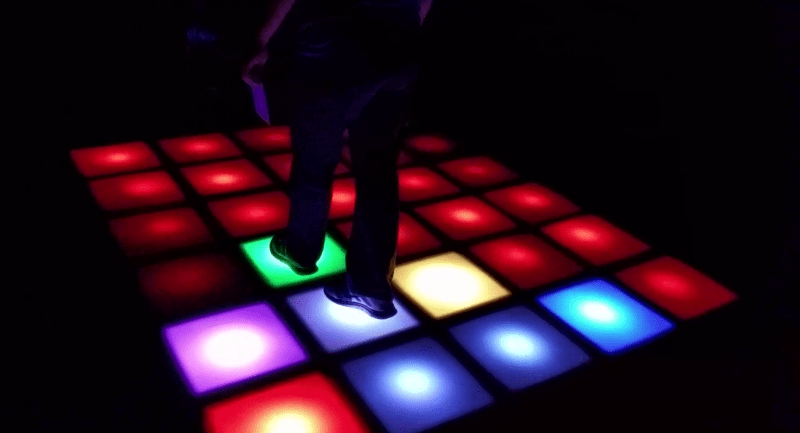It’s got a little “Saturday Night Fever” vibe to it, but this pressure-sensitive LED floor was made for gaming, not for dancing.
Either way, [creed_bratton_]’s build looks pretty good. The floor is a 5×6 grid of thick HDPE cutting boards raised up on a 2×4 lumber frame. Each cell has a Neopixel ring and a single force-sensitive resistor to detect pressure on the pad. Two 16-channel multiplexers were needed to consolidate the inputs for the Arduino that’s running the show, and a whole bunch of wall warts power everything. The video below shows a little of the build and a look under the tiles. It’s not clear exactly what game this floor is for, but you can easily imagine a maze or some other puzzle that needs to be solved with footsteps.
Light-up floors are nothing new here, what with this swimming pool dance floor. But this interactive dance floor comes close to the gaming aspect of [creed_bratton_]’s build.















This is awesome! To shamelessly add to the list of other floors, here’s one that uses capacitive sensors:
https://hackaday.io/project/4209-interactive-disco-dance-floor
Well, two dance floors cannot best thousands of weather clocks or 3d printers
…beat… , sorry
Needs a DDR vs Simon mashup and a live feed of drunk people trying it…
But wtg Dan, you’re flooring us with these articles, I am en-tile-ly illuminated, I appreciate you disco-vering this for us… this has been a punsomware attack capability demonstration, please send $20 in bitcoin to stop them getting any worse.
The seventies rang and asked HAD to shut down that damn worm hole.
The effect is quite nice, but the implementation is a little strange:
The Neopixels are WS2812 LEDs, so each of them is individually programmable to a color. What sense does this make under the diffusor plate?
And why use a bucketload of wall warts, when a single computer PSU or just a 5V ~20A PSU would have done the job? Are the small PSUs available for free somewhere?
Based on the construction used, I would say he largely went after a kit-like assembly of his electronics. Basically, he used a ring and power board (I assume 1 for each ring) from Sparkfun. Five of those units were powered from a wallwart.
In the comments he states that he also used 1 wallwart for every five pressure pads.
From an assembly perspective, from what I’ve seen so far, the circuitry is just simple off-the-shelf parts that can be, relatively, easily put together. Lots of wiring sure, but nothing seriously complicated.
Would I have done it differently? Of course!
although theres the possibility that you alone are right, i believe there might also be technical reasons…
he predicted he would have the same cable-run issues that a lot of people have and without needing to build then test a solution, he dicided to eliminate the problems before encountering them WITHOUT having to actually DESIGN (and test) anything extra (like differential andor bi-polar data)
he is doing “high-voltage distribution” aka 115vor230v with “local power regulation” and therefore does not have 20A ground currents and subsequent voltage-drop/noise issues.
also thin-er cabling (for a one-off project) is lighter and maybe free-er